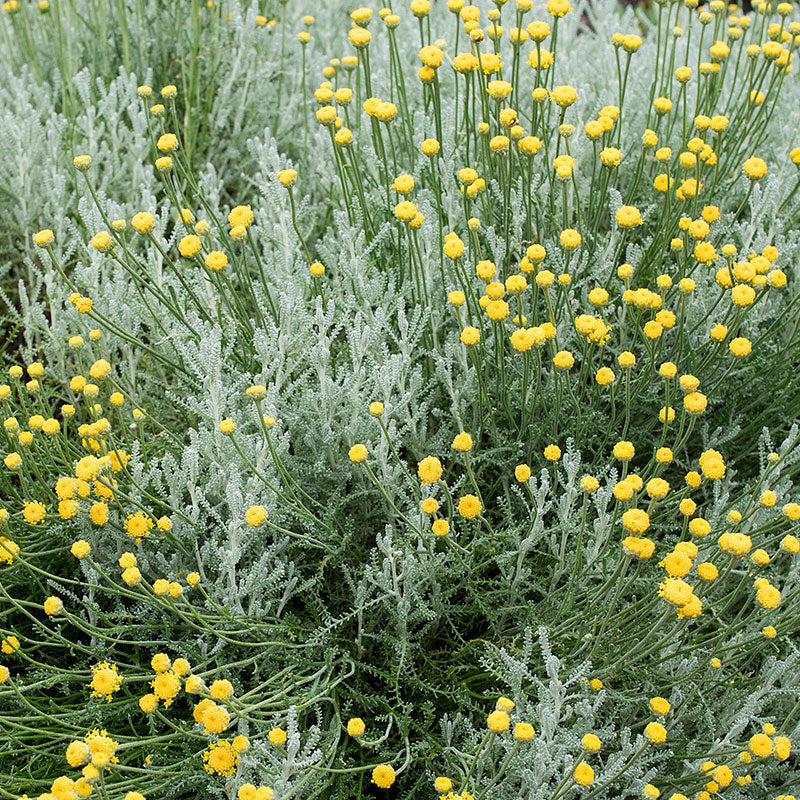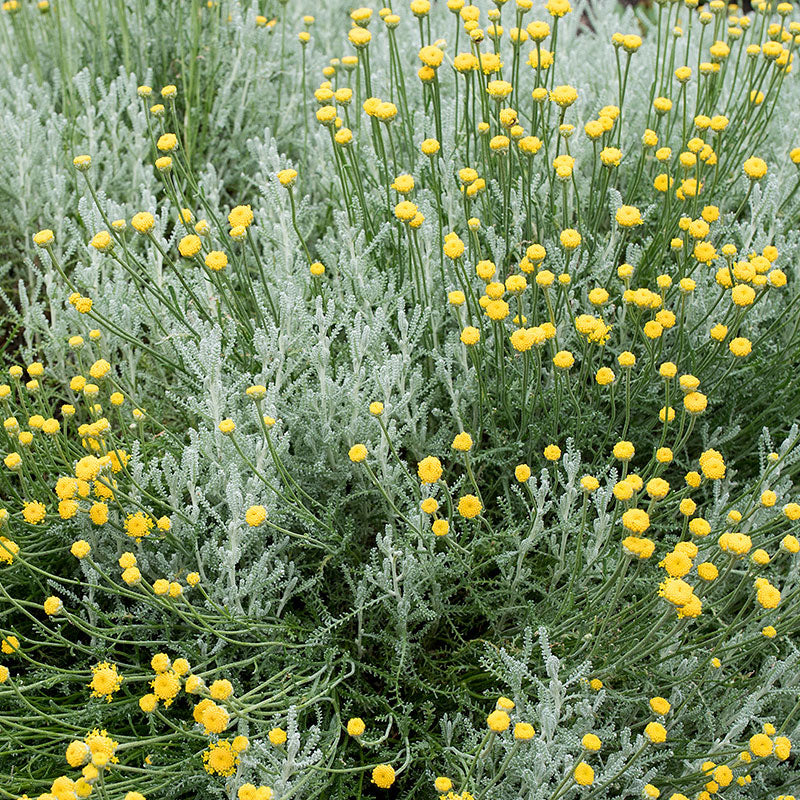Seed Packet
Lavender Cotton
Santolina chamaecyparissus ssp. tomentosa
Golden button flowers bloom at the tips of lavender cotton's silvery dentate leaves, radiating a pungent, spicy scent when brushed against. A hardy plant that transports edging and pathways in well-drained soils in hot and dry rock gardens into a Mediterranean idyll. Exceptional drought tolerance once fully established, it attracts pollinators while repelling rabbits and deer.
SKU #S1421
































